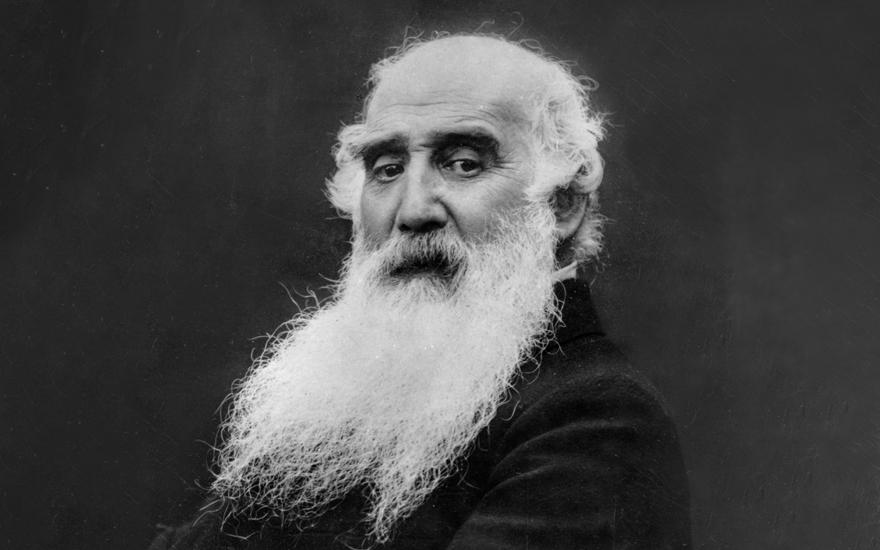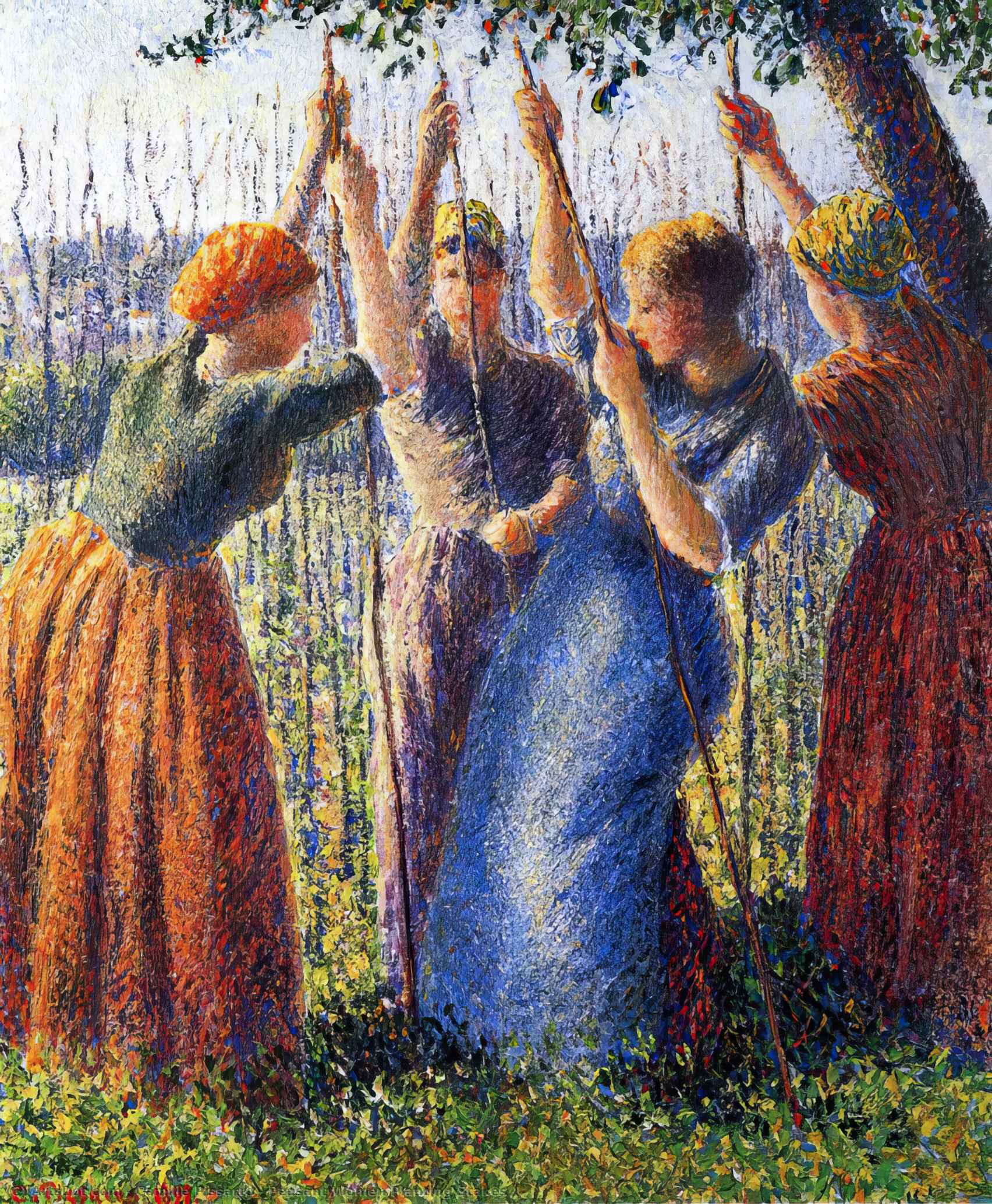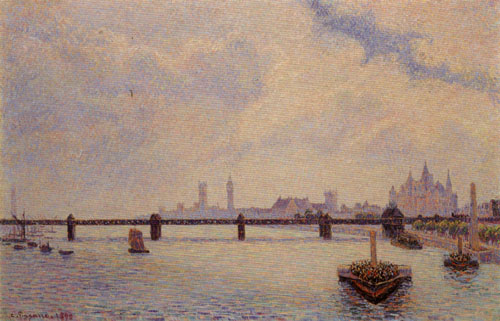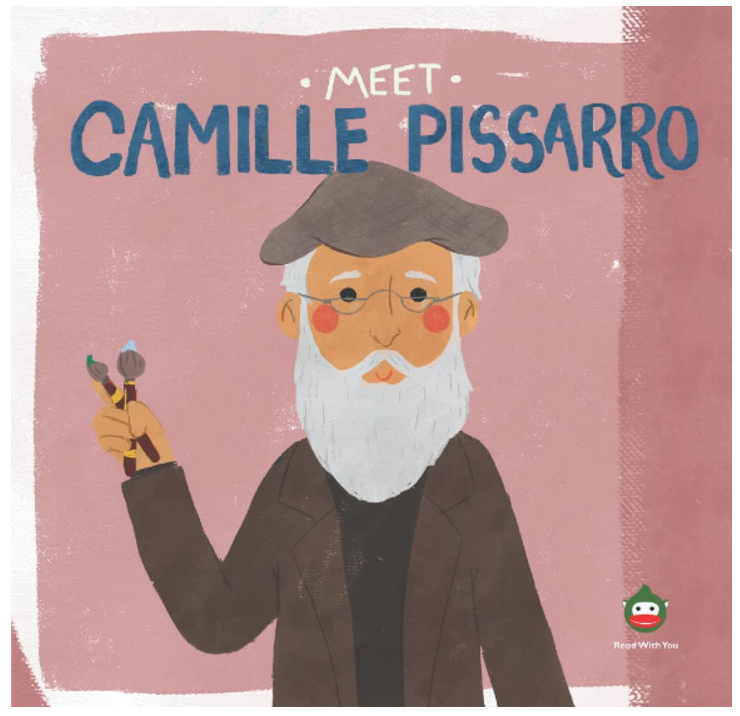- Home
- Art History
- Impressionism
- Camille Pissarro
Camille Pissarro - Impressionist
 Camille Pissarro
Camille PissarroCamille Pissarro (1830 - 1903) was a key figure in the Impressionist movement, known for his dedication to plein air painting and his ability depict rural and urban landscapes with remarkable sensitivity. Born in the Danish West Indies, he later settled in France, where he mentored and collaborated with several prominent artists, including Paul Cézanne and Paul Gauguin. Pissarro's work is characterized by its luminous palette, loose brushwork, and attentiveness to the effects of light and atmosphere. Through his innovative artistic vision, Pissarro made significant contributions to the development of modern art, influencing generations of artists to come.
Early Impressionist Style
Pissarro's early impressionist style was marked by his fascination with capturing the fleeting effects of light and atmosphere. Painting en plein air, he focused on rural landscapes and daily life in the countryside. His early works featured a luminous palette, delicate brushwork, and a keen eye for the interplay of natural light and color. This innovative approach laid the foundation for his artistic development, ultimately shaping the course of Impressionism and modern art.
Life in France
Upon settling in France in the 1850s, Pissarro immersed himself in the country's rich artistic culture. He studied under several notable painters, such as Jean-Baptiste-Camille Corot, and was inspired by the Barbizon School's emphasis on naturalism.
 Peasant Women Planting Stakes -
by Camille Pissarro, 1891
Peasant Women Planting Stakes -
by Camille Pissarro, 1891Pissarro felt an affinity for the daily rhythms of peasant life that he witnessed around his home in the village of Éragny, not far from Paris. This connection inspired him to create numerous paintings capturing the simple, yet captivating aspects of rural existence. Through his skillful brushwork and keen observation, he immortalized the labor and resilience of the working class, as well as their harmonious relationship with the surrounding landscape. His depictions of agricultural scenes, marketplaces, and village life continue to evoke a sense of nostalgia and provide a window into the past.
Pissarro's life in France was marked by his close relationships with fellow Impressionist artists, including Monet, Renoir, and Cézanne, with whom he frequently collaborated and exhibited. Pissarro captured the essence of French life in his work, portraying urban scenes, landscapes, and rural labor. Facing financial hardships and the impact of the Franco-Prussian War, he later moved to London for some time before returning to France.
Pissarro in London
With the outbreak of the Franco-Prussian War in 1870-71, Pissarro and his family left France to escape the Prussian invasion and subsequent civil uprising (known as the Commune). They spent these years in Lower Norwood, outside London. Pissarro painted numerous images of the area, as well as capturing on canvas the glass-and-iron Crystal Palace, Which still stood in the neighboring town of Sydenham. In the 1890s, he returned to London of visits, painting other city landmarks, such as the Charing Cross Bridge and Hyde Park.
 Charing Cross Bridge, London
Charing Cross Bridge, LondonPointillism/Neo -Impressionism
In the 1880s, Pissarro began branching out into new styles. He soon encountered the work of Georges Seurat and Paul Signac, artists who pioneered the Divisionist technique. Intrigued, Pissarro adopted this method, applying small dots or dashes of pure color tat would blend optically when viewed fore a distance. This new approach allowed him to create luminous, harmonious compositions with a strong emphasis on structure and color theory. Although his involvement with Neo-Impressionists was relatively short-lived, it demonstrated his willingness to experiment and engage with emerging artistic movements. it also marked what many consider to be the end of the Impressionist period.
See also: https://www.camillepissarro.org/
Okay, so now I've put on some ads from Amazon - from which I may earn a few cents. (2025)





